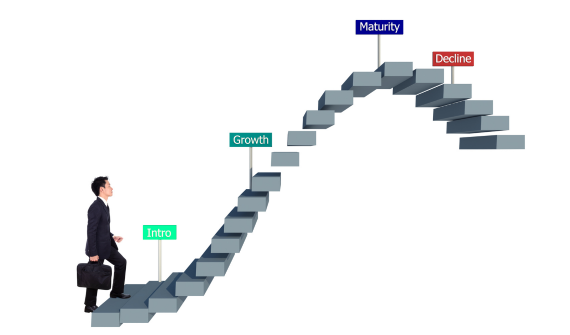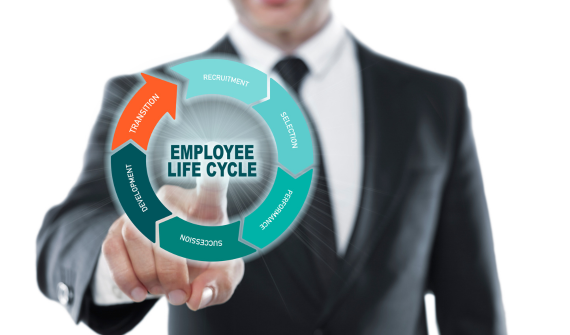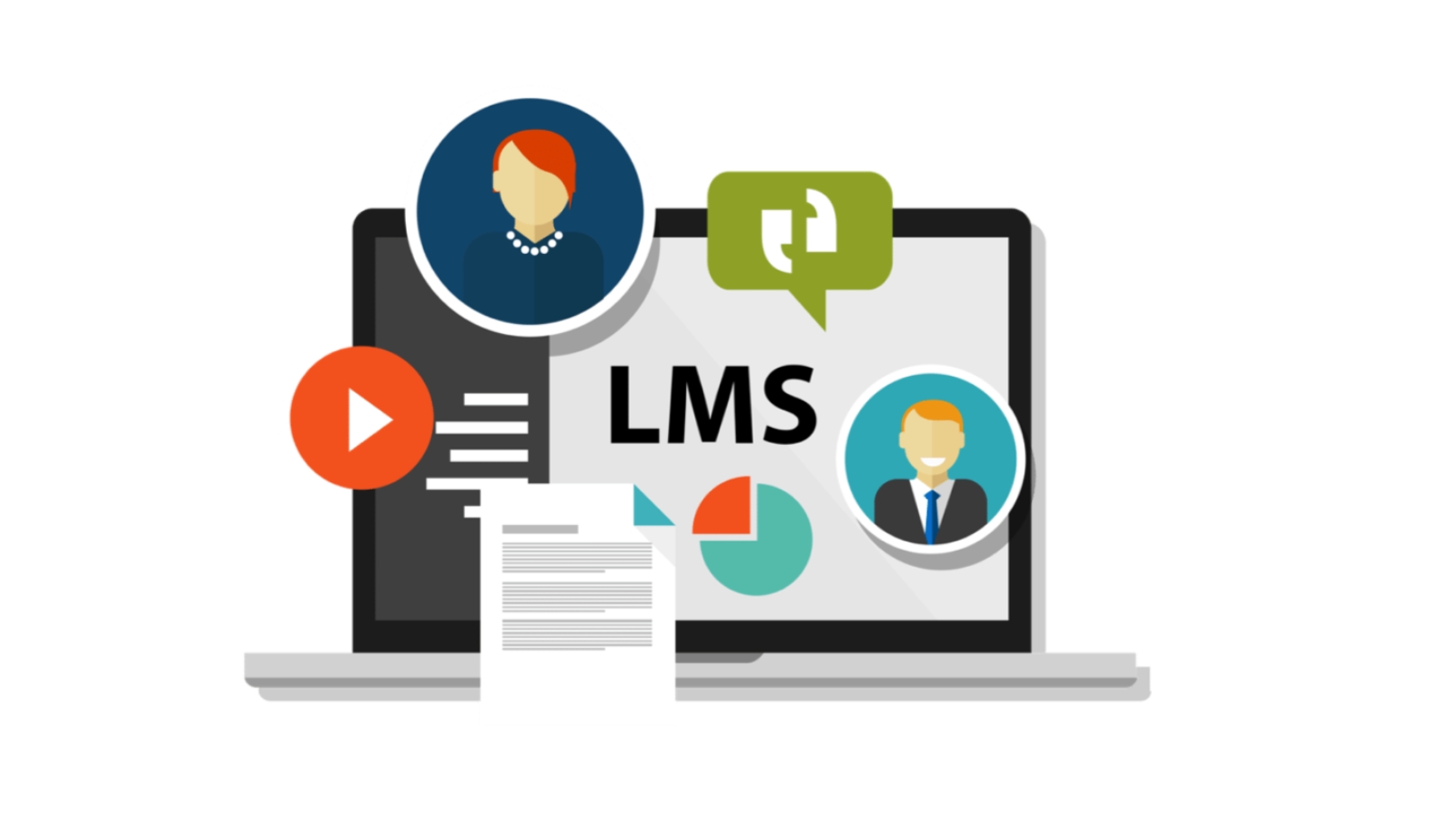The success of any business largely depends on the strength of its workforce.
To create and maintain a productive team, it's essential to have a talent management strategy in place that addresses every stage of the employee lifecycle.
From recruiting and onboarding to development and retention, a comprehensive approach to navigating the lifecycle is critical to attracting, retaining, and developing top talent.
In this article, we will explore the strategies businesses can employ to navigate the employee lifecycle and achieve successful talent management.
What Are Employee Life Cycle Models?

Employee life cycle models are a framework that companies use to understand and manage the various stages that employees go through during their time with the organization.
It typically includes stages such as recruitment, onboarding, performance management, career development, and offboarding.
Employee life cycle models help organizations develop strategies to optimize each stage of the employee lifecycle and ensure that employees are engaged, productive, and successful throughout their tenure with the company.
Importance Of Employee Life Cycle Stages

Here are 5 benefits of implementing employee life cycle stages in talent management:
1. Attracting And Hiring The Right Talent
The employee life cycle starts with the recruitment and selection process, which is critical for attracting and hiring the right talent.
By focusing on creating an effective recruitment and selection process, companies can increase their chances of attracting the right candidates, which can result in a more engaged and productive workforce.
2. Boosting Employee Engagement And Retention
By providing employees with a clear understanding of their role within the company and a sense of purpose, they are more likely to be engaged and stay with the company longer.
Effective talent management strategies that prioritize employee engagement can lead to improved job satisfaction, higher employee retention rates, and increased productivity.
3. Developing Employee Skills And Knowledge
Training and development opportunities are crucial components of the life cycle.
By offering employees opportunities for ongoing learning and development, companies can ensure that employees have the skills and knowledge necessary to perform their jobs effectively.
This can lead to improved job performance, greater innovation, and increased employee satisfaction.
4. Effective Succession Planning
Implementing an employee model can also help with effective succession planning.
By identifying and developing internal talent, companies can ensure that key roles are filled with qualified individuals who have the necessary skills and knowledge to take on new responsibilities.
This can help mitigate risks associated with unexpected employee departures and ensure continuity in key positions.
5. Better Alignment Between Business And Talent Strategies
By implementing a life cycle mode for employees, companies can better align their business and talent strategies.
This can help ensure that talent management initiatives are aligned with business objectives, resulting in a more efficient and effective workforce.
By focusing on creating a cohesive and comprehensive talent management strategy and implementing employee life cycle stages, companies can achieve a competitive advantage and drive business success.
Employee Lifecycle Phases

The employee lifecycle refers to the various stages that an employee goes through during their tenure in an organization.
These phases generally include recruitment, onboarding, development, performance management, and separation.
In this section, we will discuss each of the employee lifecycle phases in detail.
1. Recruitment
The recruitment phase is the first step in the employee lifecycle. It involves sourcing and attracting suitable candidates for open positions within the organization.
Recruitment strategies may include job postings on job boards, employee referrals, social media outreach, or hiring agencies.
2. Onboarding
Once a new employee has been hired, the onboarding phase begins.
This phase involves introducing the new employee to the company culture, policies, and procedures.
It may include providing an orientation program, assigning a mentor or buddy, and providing necessary training and resources for the employee to get started in their new role.
3. Development
The development phase focuses on providing opportunities for the employee to grow and develop their skills within the organization.
This may include training programs, coaching, mentoring, or job shadowing.
The aim is to help the employee reach their full potential and contribute to the success of the organization.
4. Performance Management
The performance management phase involves setting clear goals and expectations for the employee and providing regular feedback and performance reviews.
This phase also includes identifying areas for improvement and providing support and resources to help the employee improve their performance.
5. Separation
The separation phase is the final stage of the employee lifecycle.
It involves the voluntary or involuntary separation of the employee from the organization.
This may include resignation, retirement, termination, or layoffs.
The goal of this phase is to ensure a smooth transition and maintain positive relationships with the departing employee.
In summary, the employee lifecycle phases include recruitment, onboarding, development, performance management, and separation.
Each phase is essential in ensuring that the employee has a positive experience within the organization and contributes to the overall success of the company.
Strategies For Implementation Of The Employee Lifecycle
Implementing a successful employee lifecycle requires careful planning and execution.
Here are some strategies that can be used to implement an effective lifecycle for employees:
1. Develop A Comprehensive Plan
The first step is to develop a detailed plan that outlines the various stages of the lifecycle and the strategies to be used at each stage.
The plan should include specific goals, timelines, and metrics to measure success.
2. Communicate The Plan To All Stakeholders
It is important to communicate the lifecycle plan to all stakeholders, including managers, HR teams, and employees.
This ensures that everyone understands the goals and expectations of the lifecycle and can work together to achieve them.
3. Invest In Technology
Technology can play a significant role in implementing an effective lifecycle for employees.
HR software and tools can be used to automate various stages of the lifecycle, such as recruitment, onboarding, and performance management.
This can save time and improve efficiency.
4. Provide Regular Training And Development
Providing regular training and development opportunities is essential for the growth and development of employees.
This can include training programs, mentorship, coaching, and job shadowing.
Regular performance reviews and feedback can also help identify areas for improvement and provide support for employees.
5. Foster A Positive Company Culture
A positive company culture is critical to the success of the lifecycle.
This includes creating an environment where employees feel valued, respected, and supported.
This can be achieved by promoting open communication, recognizing and rewarding employee achievements, and providing opportunities for work-life balance.
6. Continuously Review And Improvement
The lifecycle should be continuously reviewed and evaluated to identify areas for improvement.
Regular feedback from employees, managers, and stakeholders can help identify areas that need improvement and ensure that the lifecycle remains effective and relevant.
In conclusion, implementing an effective lifecycle for employees requires a comprehensive plan, communication with stakeholders, investment in technology, regular training and development, a positive company culture, and continuous review and improvement.
By implementing these strategies, organizations can create a successful lifecycle that supports the growth and development of their employees and contributes to the overall success of the company.
Train Your Employees With Oreed
If you're looking to take your employee training to the next level, you need to check out Oreed.
This cutting-edge education intelligence platform provides a 360-degree view of your employees, giving you a comprehensive understanding of their strengths, weaknesses, and training needs.
1. Evidence-Based Decisions
By harnessing the power of Oreed's advanced analytics, you'll be able to make evidence-based decisions about how to improve your team's skills and performance.
This means you can say goodbye to guessing games and hello to data-driven insights.
2. Develop Customized Training And Courses
One of the key benefits of using Oreed is the ability to develop customized training and courses that meet your specific needs.
With the platform's deep understanding of your employees, you can create targeted programs that address their unique strengths and weaknesses.
3. Measure The Impact And Effectiveness
Once your training is underway, Oreed helps you measure its impact and effectiveness.
With detailed analytics and reporting, you can track progress, identify areas for improvement, and make sure your team is getting the most out of their training.
In short, Oreed is a game-changer for employee training.
With its powerful insights, tailored training programs, and detailed analytics, you'll be able to take your team to new heights of productivity and success.
4. What Do We Promise?
Oreed is a comprehensive learning platform that offers a seamless experience for all your employee training needs.
With us, you can consolidate all your learning experiences into a single, easy-to-use platform that streamlines the learning process for your employees.
One of the standout features of Oreed is its guided learning journeys.
These personalized learning paths are tailored to each employee's individual needs, strengths, and weaknesses.
By following a guided learning journey, employees can focus on the areas where they need the most improvement and make progress at their own pace.
But Oreed doesn't just benefit your employees - it can also have a significant impact on your organization's bottom line.
By increasing employee productivity, Oreed can help your company achieve higher levels of efficiency and profitability.
And if you're in the business of customer engagement, we can help you increase revenue and customer engagement by up to 10x, thanks to our powerful learning and training tools.
So why wait? Give Oreed a try today and see the difference it can make for your organization.
Promote lifelong learning through Oreed by experiencing the most powerful all-in-one training and development intelligent platform that streamlines all your organization's learning, training, and development activities in one place.
Final Thoughts
Navigating the Employee Lifecycle: Strategies for Successful Talent Management is a critical task for any organization looking to attract and retain top talent.
By implementing a comprehensive lifecycle plan and using technology to streamline the process, organizations can create a seamless experience for employees that supports their growth and development.
Effective talent management requires a focus on communication, transparency, and a positive company culture that values and supports its employees.
Regular training and development opportunities, along with ongoing feedback and recognition, can help employees to feel valued and supported and can contribute to their overall job satisfaction and engagement.
Finally, it is important to continuously review and evaluate the lifecycle to ensure that it remains effective and relevant.
By gathering regular feedback from employees, managers, and stakeholders, organizations can identify areas for improvement and make necessary adjustments to optimize their talent management strategies.
Overall, successful talent management requires a holistic approach that focuses on the entire lifecycle, from recruitment to offboarding.
By investing in their employees and creating a positive and supportive work environment, organizations can attract and retain top talent and achieve long-term success.
FAQs
1. What is talent management life cycle short note?
The talent management life cycle refers to the various stages involved in managing an employee's career within an organization.
This includes attracting, recruiting, onboarding, training and development, performance management, succession planning, and offboarding.
The goal of talent management is to create a positive and supportive work environment that attracts and retains top talent, while also supporting their growth and development.
A comprehensive talent management life cycle plan can help organizations achieve these goals and maximize their employees' potential.
2. What are the five elements of talent management?
The five elements of talent management are recruitment and selection, onboarding, training and development, performance management, and succession planning.
These elements are all interconnected and form a comprehensive approach to managing an employee's career within an organization.
Recruitment and selection involve attracting and hiring top talent, while onboarding focuses on integrating new employees into the company culture.
Training and development help employees to grow and develop new skills, while performance management focuses on setting and achieving goals and providing ongoing feedback.
Finally, succession planning involves identifying and developing future leaders within the organization.





